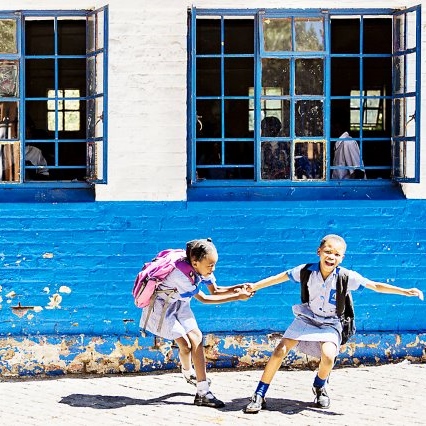
News

Dialogue through the lens: the pictures they didn’t want you to see
NICOLA MILTZ
This is the words of renowned South African Instagrammer, Miklas Simeon Mannekke, who spent six jam-packed days in Israel taking photographs around the country for a unique cultural exchange project.
Mannekke, who had never been to Israel before, was astounded by the local hospitality experienced in every city he visited.
“Where else in the world do complete strangers genuinely ask you to join them for dinner,” said Mannekke, who found Israel to be a land of sublime contrasts and extreme beauty.
He joined fellow South African Instagrammer, Alexis-Kyprianos Portokalli, on the short trip to Israel after being asked to take part in a photographic dialogue between South Africa and Israel. The two accomplished photographers have thousands of Instagram followers.
The initiative was conceptualised by the Embassy of Israel in South Africa, and the South African Friends of Israel. Four instagrammers, two from each country, took part in the joint project with the ultimate aim of exploring both countries to showcase their differences and similarities.
Last week, their combined efforts culminated in an exhibition titled #YallaYebo, which opened in Johannesburg at the FotoZA Gallery in the Rosebank Mall. The result is an artistic travelogue which displays a creative cross section of the grit and glamour that makes up each country.
Two Israeli Instagrammers, Alexander Rozenson and Ella Uzan, came to SA to photograph the country’s cultures and vast landscapes, while Mannekke and Portokalli were in Israel.
Deputy Ambassador Ayelet Black said the objective was to show how similar Israel and South Africa are in their diversity, by means of a photo dialogue. According to her, the photographers immersed themselves in each other’s countries, while artistically capturing the similarities along the way.
“There were so many incredible moments that resonated with me,” said Mannekke, who is Christian and enjoyed the cultural melting pot that makes up Jerusalem. According to his impressive resume, he is an Academy Award-nominated filmmaker, and has won numerous photographic awards both locally and abroad.
One of his brightly-coloured photographs shows a relaxed Arab carpet merchant in the Old City in Jerusalem. “The guy was so chilled, reclining in his chair, totally relaxed about me capturing him on film, without a care in the world,” Mannekke said.
Another of his photographs shows the silhouette of a religious Hassid walking away from the Kotel on Shabbat, winding his way up the long stone staircase.
There is a mirror on the wall to show who is coming in the opposite direction.
“In Israel, you always need to know what is coming around the corner,” said his colleague, Portokalli, whose black and white photograph of a young religious man chatting to an alternative hipster best captures the diverse cultures which collide constantly in daily life.
He said: “I was struck by the warmth of the people. On the Friday night, a group of religious men were praying together at the Wall. They saw me taking photographs of them on Shabbat, and happily pulled me towards them and embraced me. It was beautiful.”
While in Jerusalem, the South African photographers captured pictures of the pre-Shabbos rush at the Wall in Jerusalem, took in all the major sites in the Old City, captured the parks, religious sites and city scapes, and experienced the post-Shabbos night life on Ben Yehuda Street. They visited Tel Aviv, the nearby beaches, and Jaffa, went on a graffiti tour of Neve Tzedek, visited Haifa, the Bahai gardens, travelled to Masada, swam in the Dead Sea, and visited a kibbutz, as well as numerous other destinations including Yad Vashem and Ein Kerem.
“I didn’t know what to expect, I was pleasantly surprised,” said Mannekke.
The Israeli Instagrammers likewise travelled extensively during their six-day stay, taking in things like the Hector Pieterson Memorial, Vilikazi Street, and other sites in Soweto. They went to Constitutional Hill, sampled Ethiopian food, visited Maboneng, Arts on Main and Keyes Avenue, went to the Lesedi Cultural Village, and the Lion Park. They visited Durban, sampling Indian food and culture, captured beach scenes along the promenade, and visited local schools. While in Cape Town, they enjoyed tandem paragliding, going on the Table Mountain cable car, whale watching, beer tasting, and visiting various townships.
The opening of the exhibition coincided with renewed attacks on Israel from Gaza following the recent flare up along the Gaza border. It was a week in which dozens upon dozens of rockets were fired into Israel, causing emergency siren alerts to ring across the southern region, with residents scrambling for cover.
Anti-Israel and pro-Palestinian protesters made several attempts to disrupt the opening. The small group of protesters waved Hezbollah flags covered in red paint, and insulted patrons wishing to enter the gallery. Members of the community security organisation and local members of the South African Police were forced to blockade the entrance because of the menacing protesters. A number of patrons were turned away.
In an attempt to provoke violence, the protesters screamed anti-Israel abuse, all of which was muted for those inside the gallery by its bullet-proof windows.
Said patron and well-known community leader, Reeva Forman: “It was refreshing to see these two countries through the eyes of young artistic people with no political agenda, just a factual photographic account of what lay before them.”
- The exhibition runs until 10 June.
Photo: Taken by Alexander Rozenson in Soweto




